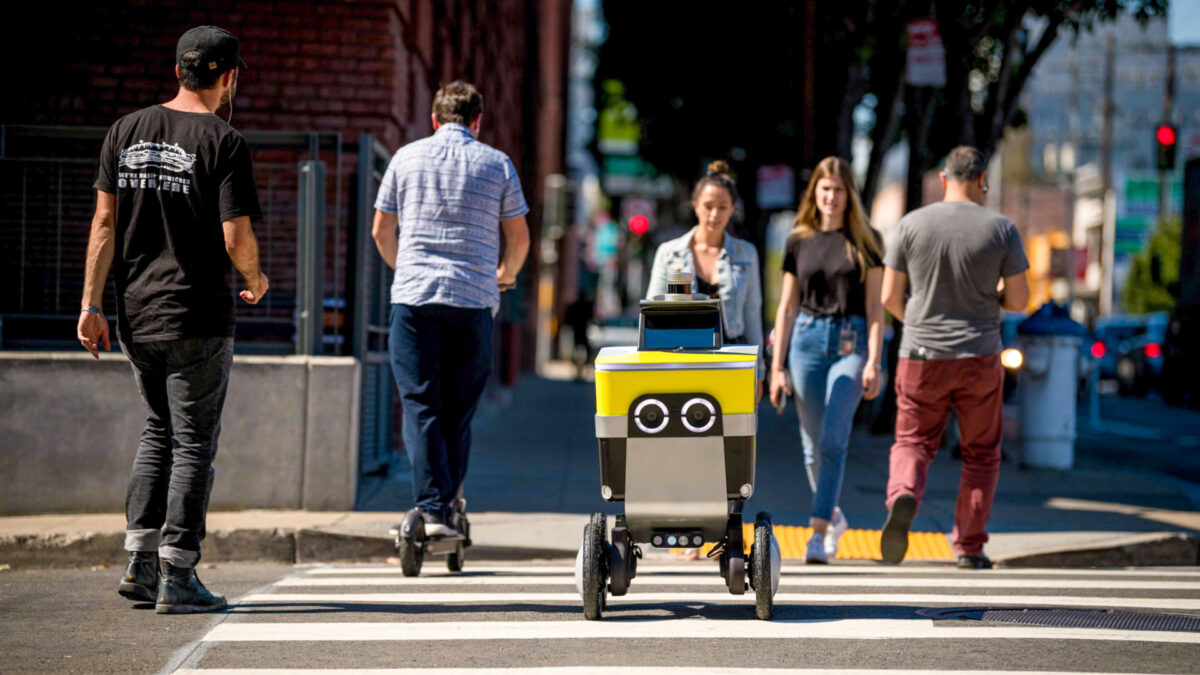
In an industry milestone, Bay Area-based autonomous sidewalk delivery company Serve Robotics announced Thursday that it had completed the first-ever commercial deliveries using autonomous vehicles that require zero human intervention.
Serve revealed that it will be deploying next-generation robots with Level 4 autonomy, meaning the vessels don’t require remote operators to keep an eye on deliveries or step in if needed. Contrast that with competitors in the sidewalk delivery industry like Coco, Starship Technologies and Kiwibot, all of which operate at Level 3 autonomy and require at least some human intervention. As another example, Tesla’s Autopilot feature is currently classed as Level 2.
Unlike those companies, Serve is now able to complete fully autonomous sidewalk deliveries in designated areas, and according to TechCrunch the startup has Level 4 capabilities in several Los Angeles neighborhoods. That’s a major milestone for the industry, which up until now has necessitated the use of remote operators to deliver.
Watch: More providers offering robotics as a service
So how do they do it?
All of Serve’s next-generation robo-delivery vehicles are equipped with sensors like lidar, ultrasonics and cameras, as well as automatic emergency braking, fail-safe mechanical braking and vehicle collision avoidance technology. Serve also worked with Nvidia and its Jetson platform to enhance its robots’ real-time AI computing capabilities.
“When the robot is in a given area where Level 4 is enabled, the remote video feed turns off and the robot continues navigating autonomously without requiring a human in the loop,” co-founder and CEO Ali Kashani told TechCrunch. “The robots can always request assistance if in need of one, say, if they come across something unexpected. They also turn video on while crossing intersections. But for the majority of the time they operate autonomously.”
The journey to Level 4 autonomy was a quick one for Serve. The startup was initially a spinout of the robotics division of Uber property Postmates, becoming an independent company last March. Backed by funding from Uber and venture capital firm Neo, Serve worked with the rideshare giant to enable robo deliveries for Uber Eats customers in Los Angeles, where it has now completed tens of thousands of deliveries.
Related:
Read: Nuro unveils 3rd-gen autonomous delivery vehicle, expands partnership with Kroger
Read: Faction gets in on driverless vehicle action
Shortly after, it nabbed $13 million in an expanded seed funding round to help jump-start the move toward Level 4 and an expansion of its delivery service to new markets.
“I’m proud that Serve Robotics has achieved Level 4 autonomy, which further enhances public safety by significantly reducing the potential for human error. This milestone begins to unlock the full potential of robotic delivery,” Kashani said. “This technical and commercial milestone is an achievement for the entire AV industry and accelerates our mission to make delivery more accessible and sustainable.”
But Serve hasn’t yet reached the ceiling for autonomy. According to mobility industry leader SAE International, a fifth level of autonomy exists that commercial delivery companies have yet to figure out.
Unlike Level 4 autonomy — which requires no driver attention, but only in certain geo-fenced areas, at specific times of day and under special circumstances — a vehicle with Level 5 autonomy would be able to drive itself on any surface at any place and any time, with no restrictions. And with a Level 4 delivery already under its belt, that could be next for Serve.
You may also like:
How SMBs can win (and have won) during the pandemic
Cart.com triples fulfillment footprint with FB Flurry acquisition
